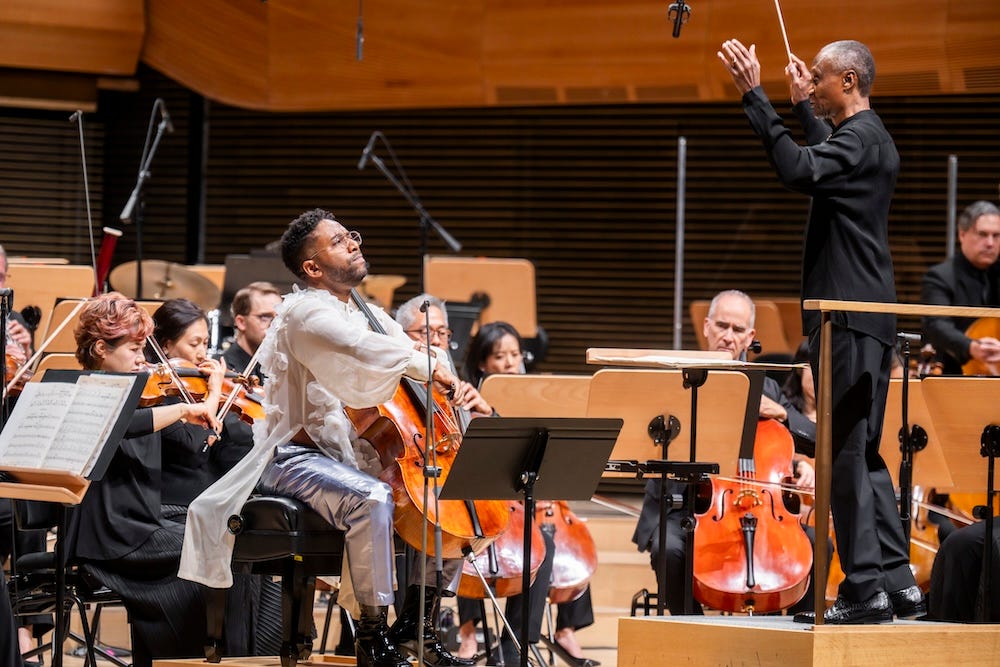Just Dandy
If Anner Bylsma’s bow was a fencing sword, Seth Parker Woods’s is a sewing needle. The way he weaves sound in Natalie Joachim’s new cello concerto Had to Be evokes the sure handedness of a master tailor.
Joachim’s piece, making homage to Black dandyism, had its Lincoln Center premiere last week, as part of “Afromodernism: Music of the African Diaspora.” And Woods’s outfit on Friday — a see-through mesh shirt — lived up to Had to Be’s inspirations. (Though judging from the photos, his opening night look was even more fanciful.)
The first movement, “Homegoing,” begins with an off-kilter trumpet fanfare. The lower strings enter, dissonant and mournful, as the snare drum fades out. In this movement — which especially reminded me of Samuel Barber, both his cello concerto and the Adagio for Strings — Woods’s playing was lyrical but stayed quiet.
So, I was especially glad to really hear him in the cadenza to the second movement, “Flare,” which showcased his staccato. In the final movement, “With Grace,” Woods’s thumb position notes were like a beautiful golden thread. With this set against glinting violin harmonics, the movement had a feeling of apotheosis. A helium balloon drifting out of reach.
The program, conducted by Thomas Wilkins, had opened with Carlos Simon’s Four Black American Dances (2023). The first movement, “Ring Shout,” was full of screaming trumpets, syncopated tambourines, and grooving violins. The second movement “Waltz” was like one danced by a somnambulist on a tightrope.
“Tap,” the third movement, lived up to its onomatopoeic name. And the final movement, “Holy Dance,” was like a cold shower and slap in the face (in the best way), with maracas, , tolling bells, and car horn-like horns. A drumroll prompted premature applause.
(Indeed, a diverse audience with many classical first-timers meant a lot of clapping between movements — which I didn’t mind, though Woods did amusedly wag a finger)
The second half of the program kept concertgoers just as occupied. David Baker’s Kosbro (1973), with its staplegun-like percussion, and William Grant Still’s Symphony No. 4 (1947) with its bang-over-the-head cadences.
In this modernist program — albeit one never straying far from tonality — Still offered traditionalist contrast. Especially well played was the third movement, marked “Humorously, the American idiom,” as playful as a cat chasing yarn, with call-and-response between strings and winds.
The audience somehow saved plenty of applause for the end.




